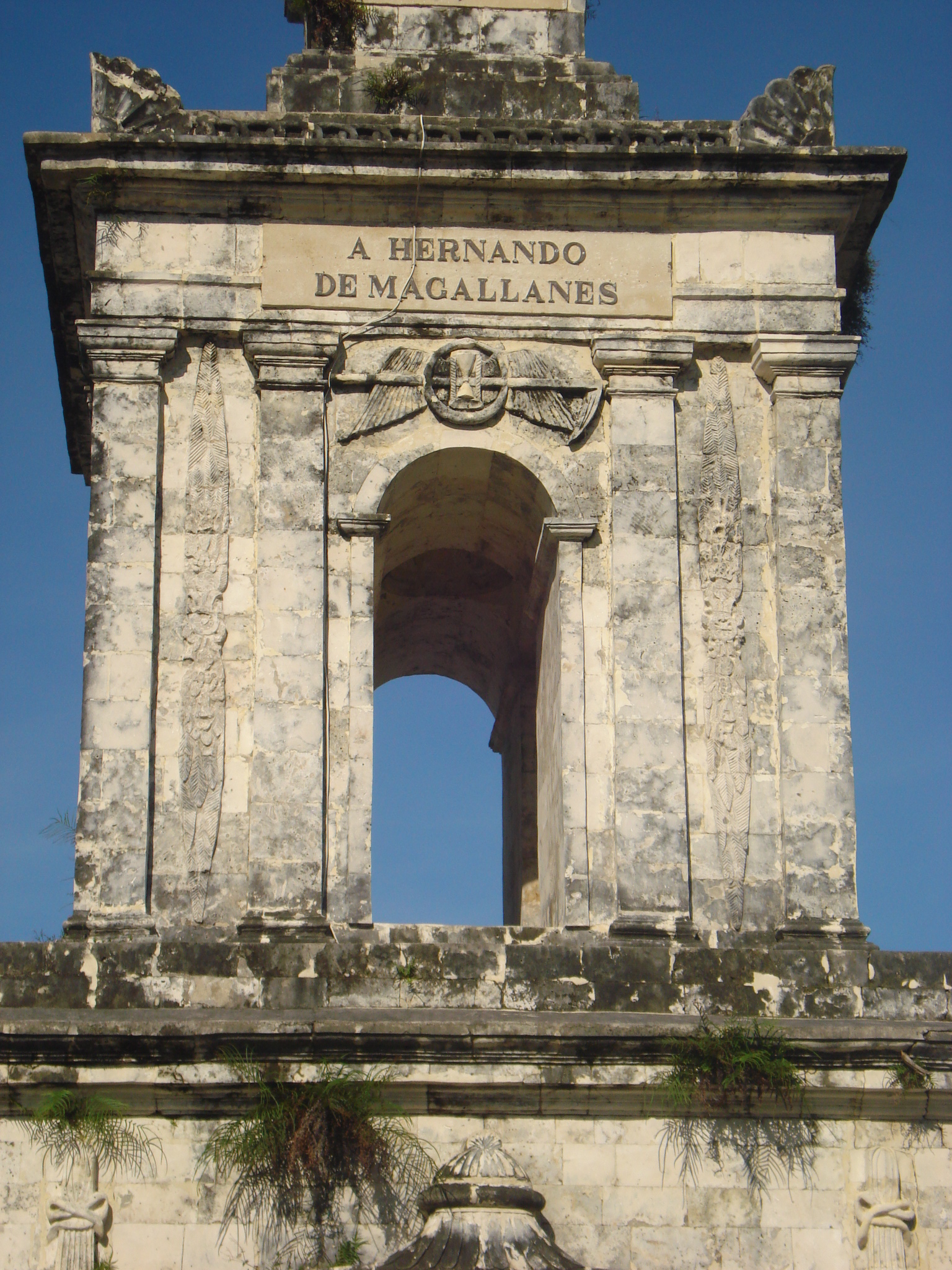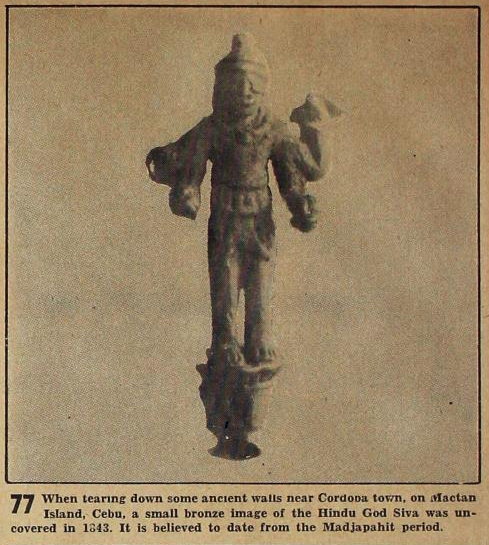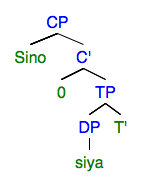|
Lapulapu
Lapulapu or Lapu-Lapu (ᜎᜉ̰-ᜎᜉ̰), whose name was first recorded as Çilapulapu, was a datu (chief) of Mactan in the Visayas in the Philippines. He is best known for the Battle of Mactan that happened at dawn on April 27, 1521, where he and his warriors defeated the Spanish forces led by Portuguese explorer Ferdinand Magellan and his native allies Rajah Humabon and Datu Zula. Magellan's death ended his voyage of circumnavigation and delayed the Spanish occupation of the islands by over forty years until the expedition of Miguel López de Legazpi in 1564. Legazpi continued the expeditions of Magellan, leading to the colonization of the Philippines for 333 years. Modern Philippine society regards him as the first Filipino hero because of his resistance to imperial Spanish colonization. Monuments of Lapulapu have been built all over the Philippines to honor Lapulapu's bravery against the Spaniards. The Philippine National Police and the Bureau of Fire Protection use his ... [...More Info...] [...Related Items...] OR: [Wikipedia] [Google] [Baidu] |
Battle Of Mactan
The Battle of Mactan ( ceb, Gubot sa Mactan; fil, Labanan sa Mactan; es, Batalla de Mactán) was a fierce clash fought in the archipelago of the Philippines on April 27, 1521. The warriors of Lapulapu, one of the Datus of Mactan, overpowered and defeated a Spanish force fighting for Rajah Humabon of Cebu under the command of Portuguese explorer Ferdinand Magellan, who was killed in the battle. The outcome of the battle resulted in the departure of the Spanish crew from the archipelago of the Philippines. Background Magellan's expedition had left Spain in August 1519 on a mission to find a westward route to the Moluccas or Spice Islands. On March 16, 1521 (Julian calendar), Magellan sighted the mountains of what is now Samar. This event marked the arrival of the first documented Europeans in the archipelago. The following day, Magellan ordered his men to anchor their ships on the shores of Homonhon Island. There, Magellan befriended Rajah Kolambu and Rajah Siagu, king of L ... [...More Info...] [...Related Items...] OR: [Wikipedia] [Google] [Baidu] |
Ferdinand Magellan
Ferdinand Magellan ( or ; pt, Fernão de Magalhães, ; es, link=no, Fernando de Magallanes, ; 4 February 1480 – 27 April 1521) was a Portuguese explorer. He is best known for having planned and led the 1519 Spanish expedition to the East Indies across the Pacific Ocean to open a maritime trade route, during which he discovered the interoceanic passage bearing thereafter his name and achieved the first European navigation from the Atlantic to Asia. During this voyage, Magellan was killed in the Battle of Mactan in 1521 in the present-day Philippines, after running into resistance by the indigenous population led from Lapulapu, who consequently became a Philippines national symbol of resistance to colonialism. After Magellan's death, Juan Sebastián Elcano took the lead of the expedition, and with its few other surviving members in one of the two remaining ships, completed the first circumnavigation of Earth when they returned to Spain in 1522. Born 4 February 1480 into a ... [...More Info...] [...Related Items...] OR: [Wikipedia] [Google] [Baidu] |
Lapu-Lapu City
Lapu-Lapu City, officially the City of Lapu-Lapu ( ceb, Dakbayan sa Lapu-Lapu; fil, Lungsod ng Lapu-Lapu), is a 1st class highly urbanized city in the Central Visayas region of the Philippines. According to the 2020 census, it has a population of 497,604 people. It was formerly known as Opon, the city being renamed to its present name in 1961. It is one of the cities that make up Metro Cebu in the Philippines. It is located in the province of Cebu, administratively independent from the province, but grouped under Cebu by the Philippine Statistics Authority (PSA). Mactan–Cebu International Airport, the second busiest airport in the Philippines, is located in Lapu-Lapu City. History In the 16th century, Mactan Island was colonized by Spain. Augustinian friars founded the town of Opon in 1730, and it became a city in 1961. It was renamed after Datu Lapulapu, the island's chieftain, who led the defeat against the Portuguese explorer Ferdinand Magellan in 1521 in the Battle of ... [...More Info...] [...Related Items...] OR: [Wikipedia] [Google] [Baidu] |
Rajahnate Of Cebu
Cebu, or Sugbu, also called the Cebu Rajanate, was an Indianized raja (monarchical) mandala (polity) on the island of Cebu in the Philippines prior to the arrival of the Spanish conquistadors. It is known in ancient Chinese records as the nation of Sokbu (束務). According to Visayan oral legend, it was founded by Sri LumaySantarita, J. B. (2018). Panyupayana: The Emergence of Hindu Polities in the Pre-Islamic Philippines. Cultural and Civilisational Links Between India and Southeast Asia, 93–105. or Rajamuda Lumaya, a minor prince of the Tamil Chola dynasty which occupied Sumatra. He was sent by the maharajah from India to establish a base for expeditionary forces, but he rebelled and established his own independent polity. The capital of the nation was Singhapala (சிங்கப்பூர்) which is Tamil-Sanskrit for "Lion City", the same rootwords with the modern city-state of Singapore. History Foundation of the rajahnate According to Visayan folklore, Sri L ... [...More Info...] [...Related Items...] OR: [Wikipedia] [Google] [Baidu] |
Rajah Humabon
Rajah Humabon, later baptized as Don Carlos, (died April 27, 1521) was the Rajah of Cebu (an Indianized Philippine polity). Humabon was Rajah at the time of the arrival of Portuguese-born, Spanish explorer Ferdinand Magellan in the Philippines in 1521. There is no official record of his existence before the Spanish contact in 1521. The existing information was written by Magellan's Italian voyage chronicler, Antonio Pigafetta on Humabon and the indigenous Philippine peoples that existed prior to Spanish colonization. Rajah Humabon is cited as the reason for why Magellan fought in the Battle of Mactan, as the latter wanted to earn the trust of Humabon by helping him subdue his opponent Lapulapu, the datu of Mactan. Legendary accounts There is no official record of the origins of Rajah Humabon prior to the arrival of Magellan. According to tradition, Humabon (also known as Sri ''Hamabar'') was the son of Sri Bantug, and the grandson of Sri Lumay. His ancestor, Sri Lumay, a ... [...More Info...] [...Related Items...] OR: [Wikipedia] [Google] [Baidu] |
Cebu (historical Polity)
Cebu, or Sugbu, also called the Cebu Rajanate, was an Indianized raja (monarchical) mandala (polity) on the island of Cebu in the Philippines prior to the arrival of the Spanish conquistadors. It is known in ancient Chinese records as the nation of Sokbu (束務). According to Visayan oral legend, it was founded by Sri LumaySantarita, J. B. (2018). Panyupayana: The Emergence of Hindu Polities in the Pre-Islamic Philippines. Cultural and Civilisational Links Between India and Southeast Asia, 93–105. or Rajamuda Lumaya, a minor prince of the Tamil Chola dynasty which occupied Sumatra. He was sent by the maharajah from India to establish a base for expeditionary forces, but he rebelled and established his own independent polity. The capital of the nation was Singhapala (சிங்கப்பூர்) which is Tamil-Sanskrit for "Lion City", the same rootwords with the modern city-state of Singapore. History Foundation of the rajahnate According to Visayan folklore, Sri L ... [...More Info...] [...Related Items...] OR: [Wikipedia] [Google] [Baidu] |
Philippines
The Philippines (; fil, Pilipinas, links=no), officially the Republic of the Philippines ( fil, Republika ng Pilipinas, links=no), * bik, Republika kan Filipinas * ceb, Republika sa Pilipinas * cbk, República de Filipinas * hil, Republika sang Filipinas * ibg, Republika nat Filipinas * ilo, Republika ti Filipinas * ivv, Republika nu Filipinas * pam, Republika ning Filipinas * krj, Republika kang Pilipinas * mdh, Republika nu Pilipinas * mrw, Republika a Pilipinas * pag, Republika na Filipinas * xsb, Republika nin Pilipinas * sgd, Republika nan Pilipinas * tgl, Republika ng Pilipinas * tsg, Republika sin Pilipinas * war, Republika han Pilipinas * yka, Republika si Pilipinas In the recognized optional languages of the Philippines: * es, República de las Filipinas * ar, جمهورية الفلبين, Jumhūriyyat al-Filibbīn is an archipelagic country in Southeast Asia. It is situated in the western Pacific Ocean and consists of around 7,641 islands t ... [...More Info...] [...Related Items...] OR: [Wikipedia] [Google] [Baidu] |
History Of The Philippines (1565–1898)
The history of the Philippines from 1565 to 1898 is known as the Spanish colonial period, during which the Philippine Islands were ruled as the Captaincy General of the Philippines within the Spanish East Indies, initially under the Kingdom of the Viceroyalty of New Spain, based in Mexico City, until the independence of the Mexican empire from Spain in 1821. This resulted in direct Spanish control during a period of governmental instability there. However, unlike the Spanish American colonies, the Philippines, being less significant to the Spanish economy, were under much less direct royal control. The first documented European contact with the Philippines was made in 1521 by Ferdinand Magellan in his circumnavigation expedition, during which he was killed in the Battle of Mactan. Forty-four years later, a Spanish expedition led by Miguel López de Legazpi left modern Mexico and began the Spanish conquest of the Philippines. Legazpi's expedition arrived in the Philippines ... [...More Info...] [...Related Items...] OR: [Wikipedia] [Google] [Baidu] |
Philippine Languages
The Philippine languages or Philippinic are a proposed group by R. David Paul Zorc (1986) and Robert Blust (1991; 2005; 2019) that include all the languages of the Philippines and northern Sulawesi, Indonesia—except Sama–Bajaw (languages of the "Sea Gypsies") and a few languages of Palawan—and form a subfamily of Austronesian languages. Although the Philippines is near the center of Austronesian expansion from Formosa, there is little linguistic diversity among the approximately 150 Philippine languages, suggesting that earlier diversity has been erased by the spread of the ancestor of the modern Philippine languages. Classification History and criticism One of the first explicit classifications of a "Philippine" grouping based on genetic affiliation was in 1906 by Frank Blake, who placed them as a subdivision of the "Malay branch" within Malayo-Polynesian (MP), which at that time was considered as a family. Blake however encompasses every language within the geogr ... [...More Info...] [...Related Items...] OR: [Wikipedia] [Google] [Baidu] |
Bureau Of Fire Protection
The Bureau of Fire Protection (BFP; Filipino: ''Kawanihan ng Pagtatanggol sa Sunog'') is the government body in the Philippines responsible for the provision of fire services. It is under the jurisdiction of the Department of the Interior and Local Government. Functions and duties The BFP is responsible for ensuring public safety through the prevention or suppression of all destructive fires on buildings, houses, and other similar structure, forests, and land transportation vehicles and equipment, ships/vessels docked at piers, wharves or anchored at major seaports, petroleum industry installations. It is also responsible for the enforcement of the Fire Code of the Philippines (PD 1185) and other related laws, conduct investigations involving fire incidents and causes thereof including the filing of appropriate complaints/cases. According to its website, the primary functions of the BFP are * Prevention and suppression of all destructive fires; * Enforcement of the Revised Imp ... [...More Info...] [...Related Items...] OR: [Wikipedia] [Google] [Baidu] |
Antonio De Morga
Antonio de Morga Sánchez Garay (29 November 1559 – 21 July 1636) was a Spanish soldier, lawyer and a high-ranking colonial official for 43 years, in the Philippines (1594 to 1604), New Spain and Peru, where he was president of the Real Audiencia for 20 years. He was also a historian. After being reassigned to Mexico, he published the book ''Sucesos de las Islas Filipinas, Sucesos de las islas Filipinas'' in 1609, considered one of the most important works on the early history of the Spanish colonization of the Philippines. As Deputy Governor in the Philippines, he restored the ''audencia.'' He took over the function of judge or ''oidor''. He also took command of Spanish ships in a 1600 naval battle against Dutch corsairs, but suffered defeat and barely survived. His history was first published in English in 1868; numerous editions have been published in English, including a 1907 edition that is online at the Gutenberg Project It has also been reprinted in Spanish and other lan ... [...More Info...] [...Related Items...] OR: [Wikipedia] [Google] [Baidu] |
Tagalog Grammar
Tagalog grammar (Tagalog: ''Balarilà ng Tagalog'') is the body of rules that describe the structure of expressions in the Tagalog language, the language of the Tagalog region of the Philippines. In Tagalog, there are nine basic parts of speech: nouns (''pangngalan''), pronouns (''panghalip''), verbs (''pandiwa''), adverbs (''pang-abay''), adjectives (''pang-uri''), prepositions (''pang-ukol''), conjunctions (''pangatnig''), ligatures (''pang-angkop'') and particles. Tagalog is an agglutinative yet slightly inflected language. Pronouns are inflected for number and verbs for focus, aspect and voice. Verbs Tagalog verbs are morphologically complex and are conjugated by taking on a variety of affixes reflecting focus/trigger, aspect, voice, and other categories. Below is a chart of the main verbal affixes, which consist of a variety of prefixes, suffixes, infixes, and circumfixes. Conventions used in the chart: * ''CV~'' stands for the reduplicated first syllable of a root word ... [...More Info...] [...Related Items...] OR: [Wikipedia] [Google] [Baidu] |







